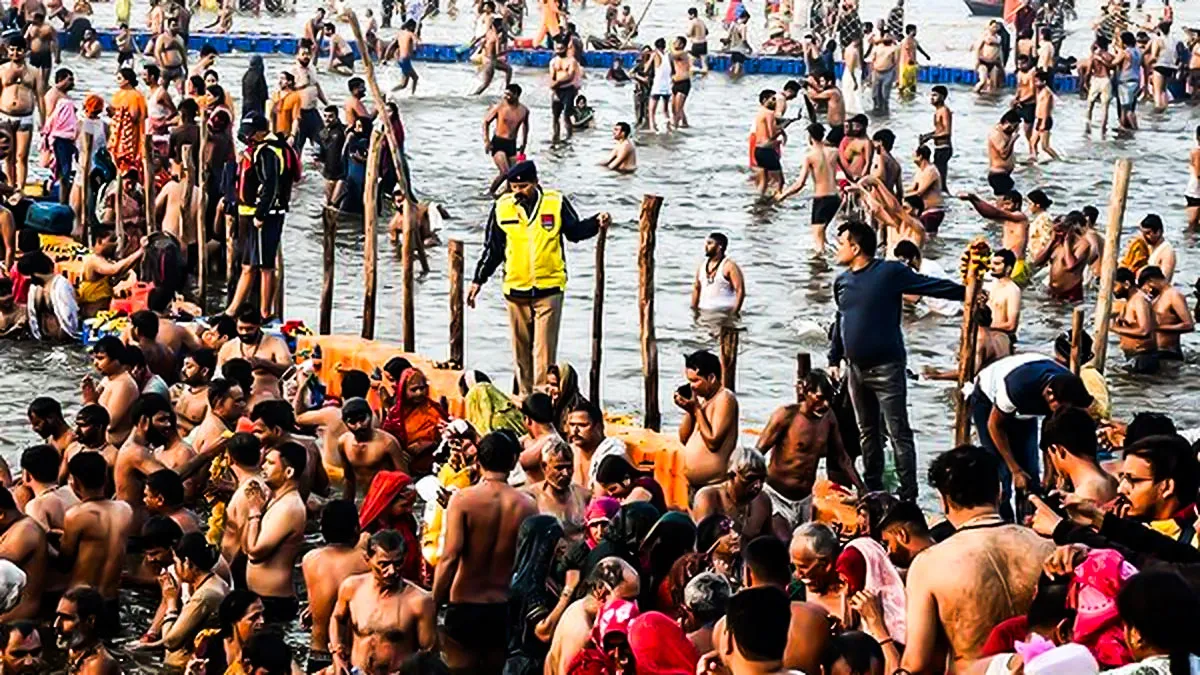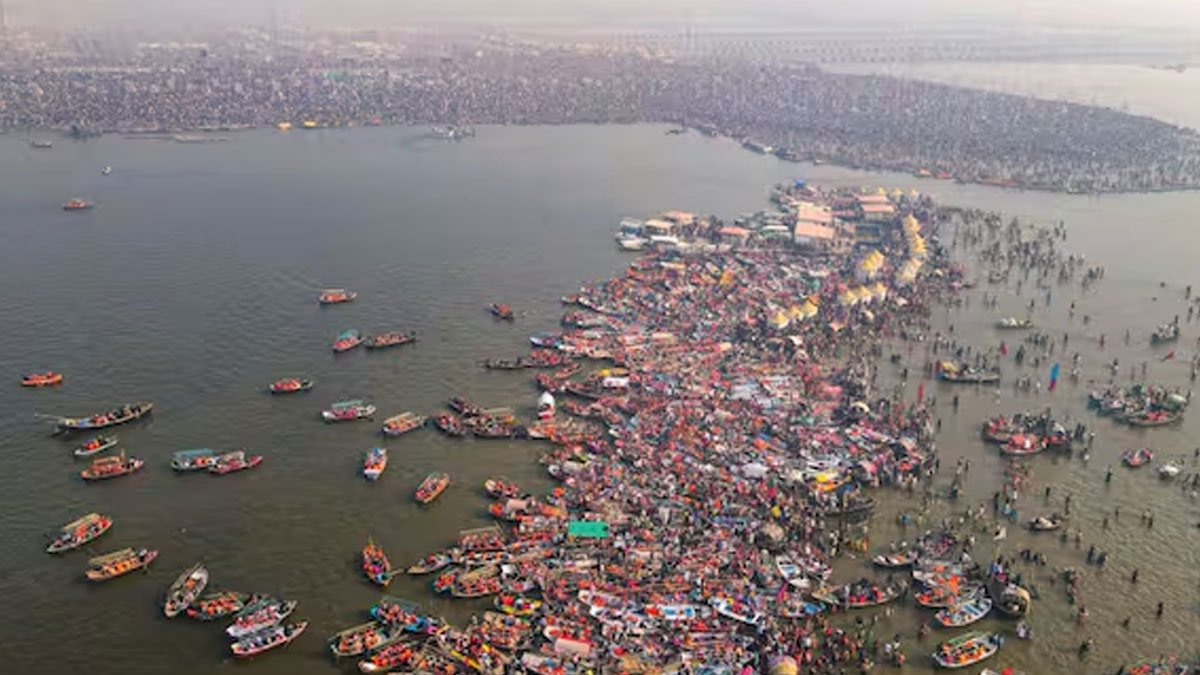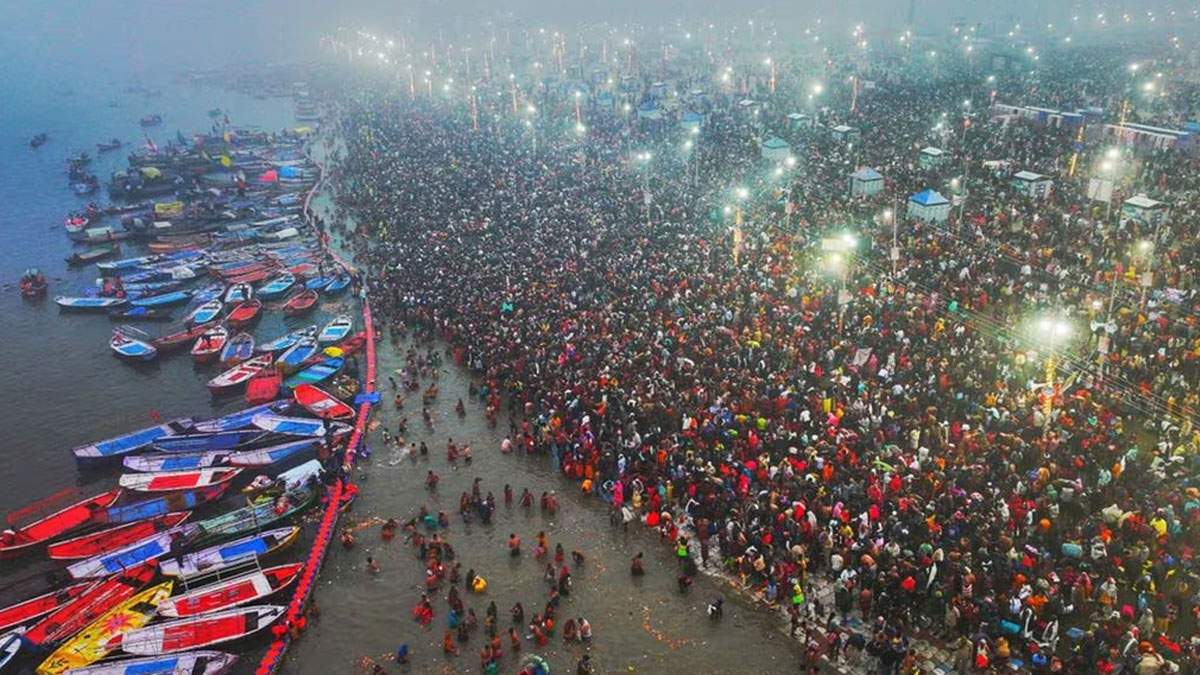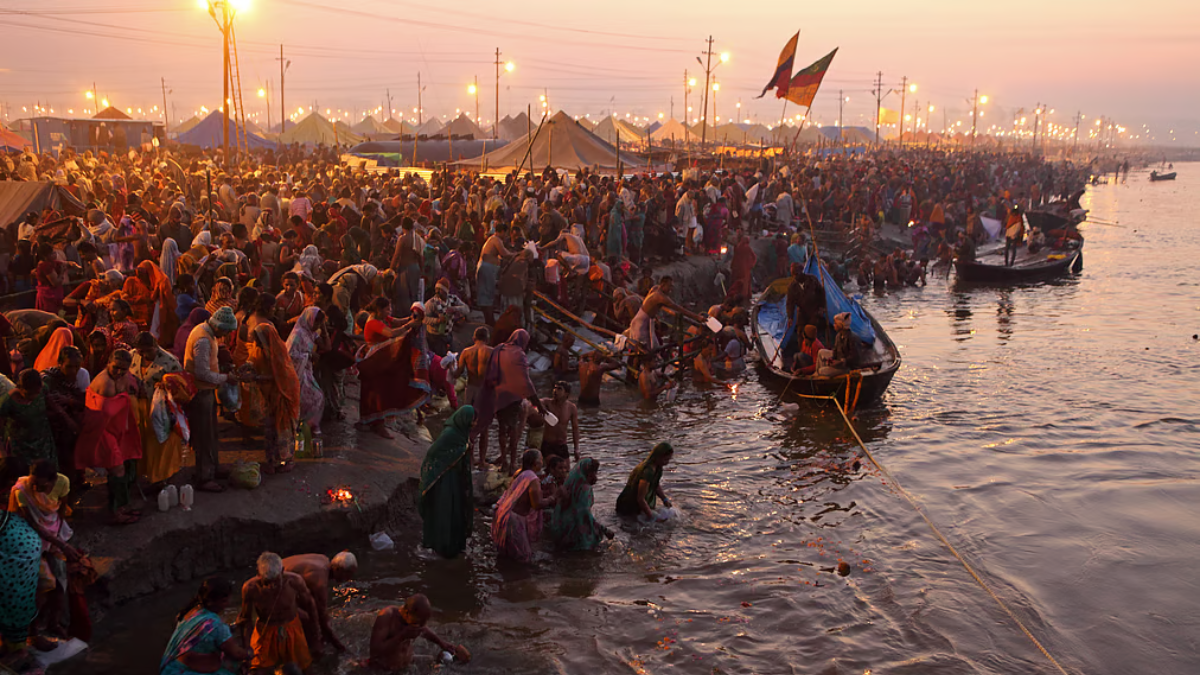
The sacred waters of the Ganga have once again come under scrutiny as the National Green Tribunal (NGT) raises alarms over alarming levels of faecal bacteria contamination in Prayagraj. Since January 13, millions of devotees have been participating in the Maha Kumbh Mela, taking ritualistic dips in the river. However, a report by the Central Pollution Control Board (CPCB) has revealed that water quality in multiple locations does not meet primary bathing standards, raising significant public health concerns.
Table of Content:-
CPCB Report Reveals Severe Contamination
According to the CPCB’s findings, faecal coliform—a key indicator of sewage pollution—has surpassed permissible limits at various monitoring sites in Prayagraj. As per CPCB guidelines, the acceptable level of faecal coliform for bathing water is 2,500 units per 100 ml. However, the CPCB reported that concentrations exceeded these limits, particularly during auspicious bathing days when the influx of pilgrims reaches its peak.

The CPCB's report states, "The river water quality was not conforming to the primary water quality for bathing with respect to faecal coliform (FC) at all the monitored locations on various occasions." The data highlights that the sheer volume of pilgrims engaging in ritualistic dips contributes to the increase in contamination levels.
Also Read: Bird Flu Outbreak In India: Is It Safe To Consume Chicken And Eggs?
NGT Criticises State Authorities Over Pollution Control Measures
The NGT has taken a strong stance against the Uttar Pradesh Pollution Control Board (UPPCB) for failing to present a comprehensive action plan to address the worsening water quality. A bench led by NGT Chairperson Justice Prakash Shrivastava, along with Judicial Member Justice Sudhir Agarwal and Expert Member A Senthil Vel, criticised the UPPCB for submitting only a cover letter with basic water test reports instead of a detailed action report.

Upon reviewing these reports, the tribunal noted, "Even upon reviewing the documents enclosed with the covering letter dated January 28, 2025, it is reflected that high levels of faecal and total coliform have been found at various locations." This raises questions about the effectiveness of existing pollution control measures and the responsibility of state agencies in ensuring clean water for millions of devotees.
Also Read: India Developing Its First Indigenously Developed Monkey Fever KFD Vaccine
NGT Demands Accountability and Action
In response to the findings, the NGT has directed the Member Secretary of UPPCB and the concerned state authorities responsible for maintaining Ganga’s water quality in Prayagraj to appear virtually at the next hearing on February 19. This directive aims to push for greater accountability and immediate remedial measures to curb further pollution.

The tribunal has also granted an additional day for the Uttar Pradesh government to review the report and submit an official response. This move is expected to shed light on the administration’s plan to tackle the worsening water contamination issue.
The Challenge of Keeping the Ganga Clean
The Maha Kumbh Mela is one of the largest religious gatherings in the world, drawing millions of pilgrims, saints, and tourists. While the festival is deeply rooted in spiritual traditions, it also brings significant environmental challenges, particularly in maintaining the sanctity and cleanliness of the river. The recent findings underscore the urgent need for improved sewage treatment infrastructure and better waste management strategies to prevent such contamination in the future.
Public Health Concerns and the Way Forward
Exposure to faecal coliform-contaminated water poses severe health risks, including gastrointestinal diseases, skin infections, and other waterborne illnesses. Authorities must act swiftly to implement stricter pollution control measures, ensure proper sewage disposal, and increase public awareness about the impact of water pollution.
With the NGT pushing for greater accountability, the coming weeks will be crucial in determining the course of action that the state and central authorities will take to restore Ganga’s water quality and protect the health of millions who revere and rely on its sacred waters.
Also watch this video
How we keep this article up to date:
We work with experts and keep a close eye on the latest in health and wellness. Whenever there is a new research or helpful information, we update our articles with accurate and useful advice.
Current Version